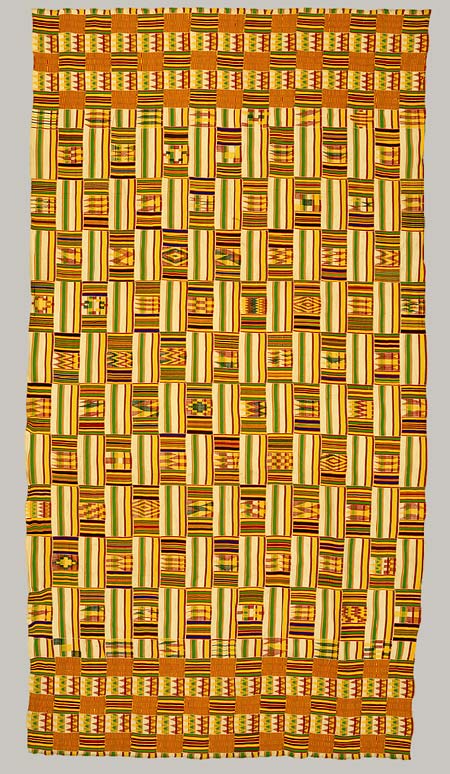Met
Audio Tour,
Mini-test,
and Extra-Credit Learning Activity

The Tour:
There are two ways to do the tour: (1) you can download the tour and
listen to it at the Museum on an MP3 player (I-Pod or the like) or
(2) you can purchase for fifty cents an audio CD and listen to the
tour on a cd-player. I have one cd-player I can lend out for students
who do not have one.
Downloading The
Tour:
MP3:
Right click (or on a Mac, ctrl+click) here
AAC: (higher quality, but itunes/ipod only):
Right click (or on a Mac, ctrl+click) here
Then choose, "Save File As," and
save the file ("met_tour.mp3" or "met_tour.m4a")
on your desktop. From there, you can drag it to your Mp3 player.
Details on getting
to the Met:
Location:
The Metropolitan Museum of Art
1000 Fifth Avenue at 82nd Street
New York, New York 10028-0198
General Information: 212-535-7710
Directions
by Subway, Bus & Car
(directly from the Met's website)
Hours:
Friday 9:30 a.m.–9:00 p.m.
Saturday 9:30 a.m.–9:00 p.m.
Sunday 9:30 a.m.–5:30 p.m.
Monday Closed!!!
Tuesday 9:30 a.m.–5:30 p.m.
Wednesday 9:30 a.m.–5:30 p.m.
Thursday 9:30 a.m.–5:30 p.m.
You will be going to the
"Arts of Africa, Oceania, and the Americas" from the Permanent
Collection on the First Floor
(map
of the first floor with location of "Arts
of Africa, Oceania, and the Americas" indicated)
(Look at the end of this page for a map of the
tour itself once you arrived at "Arts of Africa, Oceania, and
the Americas")
The Mini-Test For
Extra-Credit:
In class, I will show several
images of objects from the museum in class. For each object, I will
provide you with a question that you will need to answer using material
from the audio tour. You will be allowed one 3" x 5" index
card of handwritten notes to bring into the test with you.
Because the topic of the tour -- Afro-European encounters in West
and Central Africa, 1450 - 1800 -- focuses on objects that tell the
story of the interaction between Europeans and African, the
mini-test questions, too, will focus on that interaction.
Knowing this will help make you to prepare for the mini-test.
To help you prepare for
the test, here's an example.
Let's say the audio tour
discussed the following object:

(Source: Metropolitan Museum of Art, Timelines
of Art History)
The tour might tell you
the following:
|
Brilliantly colored and elaborately
woven textiles known as kente are worn by individuals
of distinction throughout the Asante kingdom. Monumental kente
wrappers are composed of strips that are separately woven and
sewn together. The intricate designs characteristic of these
textiles are individually named and may be reserved for the
exclusive use of the king or other high-ranking officials. To
create them requires significant preparation and skill; indeed,
Asante legend traces the origins of kente to the spider Ananse,
a trickster figure known for his exceptional wisdom and cleverness.
Because of its expense and symbolic associations, only persons
of high rank wore kente, and certain patterns were reserved
solely for the king's use. A royal weaving center was established
in the seventeenth century on the outskirts of the capital at
Kumasi, where the creations of weavers could be inspected and
claimed by royal patrons. Originally, these cloths were made
of white cotton with woven designs of indigo-dyed thread. By
the seventeenth century, however, luxurious silks imported by
European slave-traders were incorporated, resulting in the vibrant
and richly hued textiles that are so admired today.
(Source: Metropolitan Museum of Art, Timelines
of Art History)
|
I might ask this question:
In a sentence or
two, describe how the vibrant and rich hues of Kente cloth are a product
of the slave trade itself.
You might respond with:
Originally, kente cloths
were woven in patterns of simply two colors, blue and white, but the
rise of the slave trade gave the Ashanti kingdom access to brightly
colored imported silks which the kingdom's weavers incorporated into
Kente cloth. Thus, the bright colors we now associate with Kente cloth
were made possible by the slave trade.
Such an answer would receive
100%!
MAP:
See
map of the path of the tour through the Arts of Africa Wing (essential
for following the tour); this map will appear in separate web page
to allow you to print it out and bring it with you as take the tour.
Extra-Credit Analytic
Essay (350 Fritz Points):
Imagine that you are a historian of Africa
that has been asked by a major museum to determine how closely related
were the cultures of Owo and Benin. You have, in turn, decided to
answer that question through a close examination of the two societies'
respective material cultures.
The "learning activity" at the end of the Audio Tour will
point you to look closely at particular aspects of the Owo Lidded
Bowl (located in the case that contains the Benin Bronzes, but on
the side closest to the Afro-Portuguese Ivories) and other objects
in order to get you started on your investigation.
Once you
listened to the learning activity, write down you what you observed
about the objects in response to the discussion in the activity and
the tour itself.
Now it's time to write your report.
You will
want to organize your report around a thesis
that encapsulates your argument as a whole. Be sure your thesis and
report take a clear stand regarding how
closely related were the cultures of Owo and Benin. Likewise, be sure
your report uses evidence from the objects to support your argument.
One good form
your thesis might take for this report is:
"The cultures
of Owo and Benin were [identical, closely related, somewhat related,
not related at all] as evidenced by objects A, B, and C for reasons
X, Y, and Z.
Be sure to organize
your presentation of evidence around the familiar cl/ev/wa
structure.
Name
your file:
hussein_sa_extracreditmet.doc
